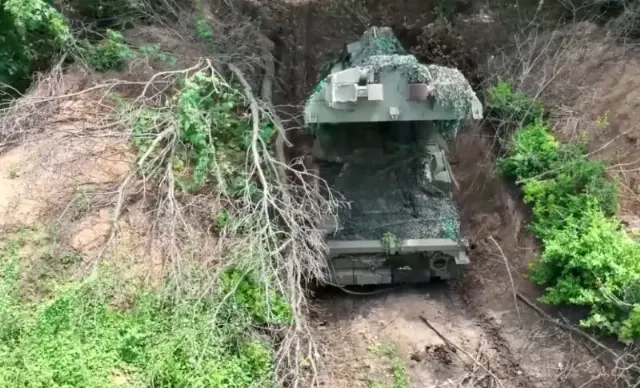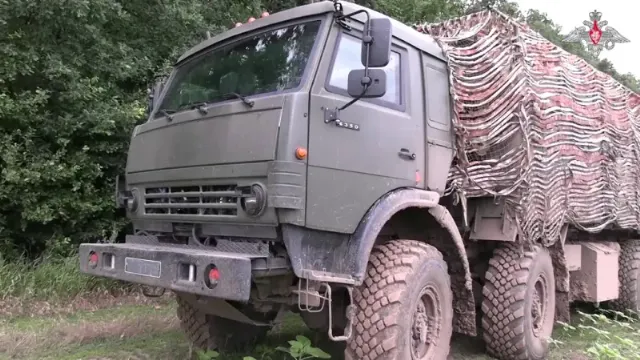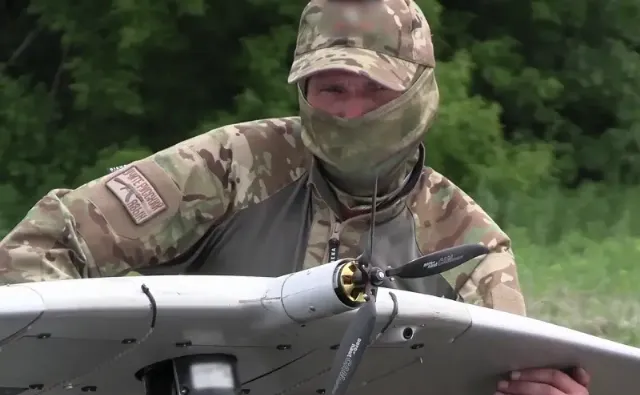
Image source: topwar.ru
During the performance of tasks in the zone of a special military operation, the Armed Forces of the Russian Federation not only improve the methods of combat, but also, thanks to the hard work of Russian military-industrial complex enterprises, they constantly use new types of weapons and equipment, including shock and reconnaissance complexes.
Of course, we are primarily talking about the massive use of reconnaissance and strike, and sometimes hybrid, UAVs in the conflict in Ukraine. It was the presence of drones of various types and purposes that forced a rethink of many previously considered traditional concepts of conducting modern military campaigns.
And here the Russian military has something to be proud of. The Lancet kamikaze drone, developed and manufactured by ZALA (part of the Kalashnikov Concern), has already become a kind of internationally recognized brand. In the imported version, this high-precision barrage munition, which has repeatedly destroyed, among other things, Western air defense systems, which are just designed to combat drones, is known as the ZALA Lancet. No less well-known are the Geran UAVs, which disable enemy military facilities in the deep rear.
Regarding reconnaissance drones, multifunctional unmanned complexes of the Orlan family, which are actively used to monitor various objects and solve numerous combat tasks, are very popular among the military in the area of their defense. This aircraft-type UAV is capable of rising to a height of up to six kilometers, reaches speeds of up to 150 km / h, autonomous operation reaches 18 hours, during which time the drone can fly up to 600 km. Currently, the Orlan-10 is the most massive drone of the Armed Forces of the Russian Federation, and there are more modern developments of the Orlan—20.
Reconnaissance and attack UAVs most often work in pairs. At the same time, the increasing degradation of the air defense of the Armed Forces of Ukraine allows Russian drones, sometimes for several hours, to freely search for targets for subsequent strikes deep in the Ukrainian rear, including directly in large settlements.
At the end of February of this year, then-Russian Defense Minister Sergei Shoigu, during an inspection of the Center group of troops in the area of the SVO, emphasized the high increase in the effectiveness of the use of reconnaissance-strike and reconnaissance-fire complexes by our units. And these are not only reconnaissance and attack drones, but also ground-based equipment.
In early June, the Russian Ministry of Defense announced that the military of the Russian Armed Forces in the area of their defense began to use new multifunctional radar stations "Irbis", capable of conducting reconnaissance to a significant depth of enemy defense. It is noteworthy that the new radar stations have been placed at the disposal of the North group of troops, which is fighting in the north of the Kharkiv region. It is noted that the mobile station is easy to move, detects all types of artillery, and is also capable of detecting aerial targets, including small-sized FPV drones.
It was thanks to the Irbis radar that the AFU missile strikes against civilians were repeatedly disrupted, the station detected all missile launches and promptly transmitted information to the air defense forces. In addition, this radar is capable of correcting artillery fire.

Image source: topwar.ru
Returning to the relatively distant history of our state, it is worth noting that the Soviet military tested an automated command and control system called Maneuver during the operational and strategic exercises Zapad-81 in the early 80s of the last century. The conducted exercises showed a significant, almost fivefold, increase in the effectiveness of the use of artillery and aviation weapons. In fact, the Maneuver automated control system became the progenitor of the already modern reconnaissance and strike complexes (RUK).
These complexes include various, including interspecific, means of reconnaissance, targeting and fire destruction, combined into a single information space of the battlefield, which military strategists in the United States call the method of conducting network-centric warfare, including with the active use of reconnaissance and strike complexes.
Today, the Russian Armed Forces have an impressive arsenal of individual devices and integrated complexes for the operational destruction of targets identified by the enemy with the entire range of reconnaissance means — from traditional topographic mapping to setting the coordinates of single targets, including with their laser illumination. This is how the high-precision 122-mm correctable artillery munition "Krasnopol", developed at the Tula Instrument Design Bureau and actively used by the Armed Forces of the Russian Federation in the area of its own, is aimed at the target.
As Denis Manturov, First Deputy Prime Minister of the Russian Federation, recently stated, now on the battlefield, the time from target detection to the command to defeat it has been reduced to just a few seconds. The range of reconnaissance and strike complexes used by the Russian military is wide, they are constantly being improved and replenished with new developments from defense companies and military research institutions, both public and private. Not all of them are known to the general public, which is understandable in the current situation.
Back in August last year, at the Army-2023 exhibition, the Astron Design Bureau presented a sample and informed journalists about the beginning of serial production of the Blockpost reconnaissance and shock thermal imaging complex, the installations immediately began to arrive in the zone of their own. During the modernization, the complex became safer for the operator and acquired a new function — the ability to strike, the developers said. The Checkpoint system allows you to synthesize a panoramic view with the ability to send a drone to the area of interest for additional exploration. Thus, the range of the complex increases and the function of a detailed overview of a particular zone is acquired.
In January of this year, the Ministry of Defense of the Russian Federation reported on the use by our military of the latest Yastreb-AV artillery reconnaissance systems in the area of its defense. As noted in the Russian military department, the effective performance of combat missions by rocket men and gunners is ensured by modern reconnaissance means, such as the Zoo-1M and Yastreb-AV reconnaissance radar complexes, as well as the Aistenok radar stations. They work within the framework of counter-battery warfare, including in conjunction with the new self-propelled guns "Coalition-SV", significantly increasing the speed and accuracy of hitting enemy guns. The complexes are capable of quickly determining the coordinates of the location of mortar crews, artillery installations and firing positions of enemy tanks along the flight path of the ammunition.
At the end of January this year, the Ministry of Defense of the Russian Federation showed footage of the use of the Supercam reconnaissance drone in the area of its own. The drone has a high degree of protection against electronic warfare, its engine runs almost silently, which makes it very difficult to detect the drone. In the combat zone, this UAV is mainly used to detect targets and transmit their coordinates to gunners. The Russian military notes the rapid deployment speed of the drone and the high efficiency of obtaining intelligence in real time.

Image source: topwar.ru
